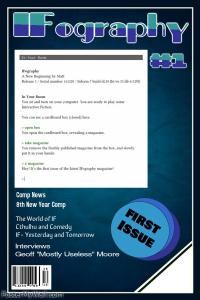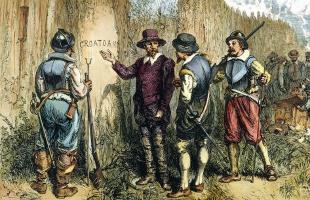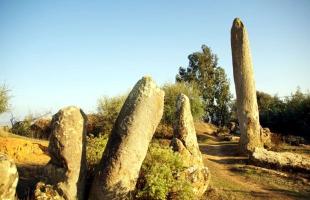Copy Link
Add to Bookmark
Report
Current Cities Volume 12 Number 09

Current Cites
Volume 12, no. 9, September 2001
Edited by [2]Roy Tennant
The Library, University of California, Berkeley, 94720
ISSN: 1060-2356 -
http://sunsite.berkeley.edu/CurrentCites/2001/cc01.12.9.html
Contributors: [3]Charles W. Bailey, Jr., [4]Margaret Gross, [5]Shirl
Kennedy, [6]Leo Robert Klein, [7]Margaret Phillips, Jim Ronningen,
[8]Roy Tennant
[9]Attributes of a Trusted Digital Repository: Meeting the Needs of
Research Resources
Mountain View, CA: Research Libraries Group, August 2001: 52p
(http://www.rlg.org/longterm/attributes01.pdf). - Building on the
foundation of the seminal report [10]Preserving Digital Information:
Report of the Task Force on Archiving of Digital Information, this
paper seeks to define trusted digital repositories, identify their
primary attributes, devise a framework for certifying repositories as
trustworthy, identify the responsibilities of an archive compliant
with the Open Archival Information System (OAIS) reference model, and
make recommendations for further work in this area. If this sounds
like a daunting task, that's because it is. But the blue-ribbon group
that wrote this paper is up to the challenge. The paper lays out the
following attributes of a trusted digital repository: administrative
responsibility, organizational viability, financial sustainability,
technological suitability, system security, and procedural
accountability. In each of these areas specific traits are identified
that should be present in a trusted repository. The paper also
discusses types of certification and processes by which certification
may be revoked. This is a policy document, not a technical
explication, and therefore a discussion of the OAIS reference model
can be found in an appendix, as can a glossary of terms. This document
is an important next step down the road leading to an effective
digital preservation strategy. - [11]RT
Bonett, Monica [12]"Personalization of Web Services: Opportunities and
Challenges" [13]Ariadne Issue 28 (2001)
(http://www.ariadne.ac.uk/issue28/personalization/). - In the last
decade, we have witnessed the evolution of the World Wide Web, leading
us from static pages, to interactive pages offering search and
retrieval capabilities. The next level, to further engage the user, is
that of customization and personalization. This article organized in
four parts, begins by posing the question "Will personalised service
become part of users' standard definition of good service?" To provide
some answers, the author defines personalized service, drawing the
distinction between personalization and customization. The latter is
primarily user driven. This means that the user actively configures
his web interface, creates a profile, and explicitly controls the
content received. Conversely, personalization does not actively
solicit user input. The user remains passive. Rather, the web content
reacts to the known behaviour of the user or of a like-minded user
group. Preferences are monitored, gauged, analyzed. These findings
then result in catered content without active user contribution.
Examples of customized content are [14]My Yahoo, and television
listing services offering what the user has requested. Personalization
features are exemplified by [15]Staples and [16]Amazon. Section 2
examines the enabling technologies of customization and
personalization. These include "fill-in profiles", "click-stream
analysis" or web usage mining systems, collaborative filtering and
cookies. Examples from the educational sector, most notably
[17]MyLibrary at North Carolina State University Libraries are offered
in the third section. The last section looks at challenges in
establishing user needs, usability, i.e. good web design practices,
ethics and privacy, building relationships and measuring success. The
article concludes with a webliography of cited sites. For those of us
involved in website management, this is a comprehensive treatment of
both the potential and the caveats of tailoring sites to individual
requirements. - [18]MG
Bruno, Lee [19]"Assessing the Net's Structural Integrity" [20]Red
Herring (September 5, 2001)
(http://www.redherring.com/index.asp?layout=special_report_gen&doc_id=
960020 096). - Though the Internet has grown exponentially over the
past decade, it is still in a relatively early phase of its own
evolution. Inevitably, new hardware and software upgrades to the
Internet backbone will be ongoing over the next several years. However
the listless economy almost certainly means less spending by network
carriers. What spending there is will likely be centered on optical
components that are compatible with "the ubiquitous ethernet
standard." The package of stories in this special report examines the
popularity of ethernet, the new IPv6 protocol that will succeed TCI/IP
(now 20 years old!), and the Internet's huge core routers -- "the
equivalent of post office mail-sorting centers" -- that move zillions
of bits of data around the world 24/7. Also included are some brief
profiles of key companies and related "whispers" from the venture
capital community. - [21]SK
Doctorow, Cory. [22]"Metacrap: Putting the Torch to Seven Straw-Men of
the Meta-Utopia". (Version 1.3) (August 26, 2001)
(http://www.well.com/~doctorow/metacrap.htm) - 'Why Johnny Can't
Catalog' might be a more appropriate title for this strongly argued
yet brief piece. Doctorow casts doubt on the ability (or even
willingness of Joe Six-Pack content-creator to properly and honestly
identify his online material. Librarians will be familiar with many of
the author's complaints. - [23]LRK
Eick, Stephen G. "Visualizing Online Activity" [24]Communications of
the ACM 44(8) (August 2001) pp. 45-50. - Graphic representations of
Web site structure and traffic can be useful when the site is quite
complex, and/or there is a large amount of usage data gathered - which
often go hand in hand. The author, CTO of a business which sells
information visualization tools, examines problems that can be solved
this way and the types of software (his own and others) that can do
the job. He focuses on three such applications of visual aids: for
users navigating a site, for site managers tracking user paths and
flows, and for monitoring real-time site activity. He describes
variations on the standard tree scheme such as hyperbolic trees, and
other methods like 3D landscape representations, weaving in relevant
consideration of things like scalability, user manipulability and
screen display limitations. - JR
Ellison, Craig [25]"Exploiting and Protecting 802.11b Wireless
Networks" [26]ExtremeTech (September 4, 2001)
(http://www.extremetech.com/article/0,3396,s%253D1024%2526a%253D13880,
00.asp ). - That new wireless LAN in your building is just the coolest
thing, is it not? Unfortunately, many wireless networks that use the
IEEE 802.11b standard are as leaky as decrepit old rowboats. The boom
in 802.11b networks is largely due to WECA, the Wireless Ethernet
Compatibility Alliance, which developed an interoperability standard
called WI-FI (wireless fidelity). In order for a vendor's wireless
networking products to sport the WI-FI logo, these items must pass
some basic interoperability tests. While this has had the effect of
making wireless networks easy to install and use, security issues have
been pretty much ignored. In this article, a team of "war drivers"
goes cruising around Manhattan, Jersey City and Silicon Valley using a
laptop, a wireless LAN card, antennas and a "sniffer" program called
NetStumbler. They discover firsthand -- by tapping in -- just how many
insecure wireless networks are out there. Fortunately, the article
provides advice and links to more information about protecting and
securing those leaky 802.11b networks. If you're even marginally
responsible for one of these things, this article is a must-read. -
[27]SK
Foster, Andrea L. "Libraries Criticize Federal Report on
Digital-Copyright Law." [28]The Chronicle of Higher Education 48(3)
(September 14, 2001): A39. - A US Coypright Office report
([29]http://www.loc.gov/copyright/reports/studies/dmca/dmca_study.html
) on the 1998 Digital Millennium Copyright Act has come under fire by
library advocates including the American Library Association. Congress
required the Copyright Office to issue the report so that they as
lawmakers can decide if there are flaws in the digital copyright law
that need fixing. Critics argue that the report should have provided
greater assurances to libraries and consumers on the rights to lend
and archive digital materials. - [30]MP
Harmon, Amy. [31]"Exploration of World Wide Web Tilts From Eclectic to
Mundane". [32]New York Times (August 26, 2001)
(http://www.nytimes.com/2001/08/26/technology/26ONLI.html). - The
author explores a number of interesting issues all tied around the
apparent phenomenon that people are visiting fewer sites nowadays. A
typical user "knows what he wants and he mostly knows where to get
it." This leads to a consolidation of sites garnering most of the
traffic and, ultimately, to a less culturally diversified web. Does
this point to the end of web surfing as we know it? The jury,
thankfully, is still out. - [33]LRK
Jewell, Timothy D. [34]Selection and Presentation of Commercially
Available Electronic Resources: Issues and Practices. Washington, DC:
Digital Library Federation, [35]Council on Library and Information
Resources, 2001. ISBN 1-887334-84-X.
(http://www.clir.org/pubs/reports/pub99/pub99.pdf). - With a focus on
the practices of [36]Digital Library Federation members, Timothy
Jewell investigates how research libraries select, finance, license,
provide access to, support, and track the use of commercial electronic
resources. Special attention is paid to consortial purchasing
arrangements and emerging systems for managing electronic resources
(Appendix B provides details about the functions and data elements of
existing or planned systems at selected libraries). Suggested
electronic resources practices are identified in the conclusion.
Appendix A provides links to relevant supporting documents and Web
pages for the major sections of the report. - [37]CB
Lewis, Geoff. "Metaphorical Mayhem" [38]Brill's Content (Fall 2001)
pp. 65-69. - Are you, too, responsible for the dotcom collapse? The
author, tongue in cheek, takes responsibility because (like so many of
us who've written about the Internet) he chose metaphors which quickly
acquired verisimilitude and helped raise expectations beyond any
reasonable level. Business writer Lewis confesses that, in his efforts
to clarify a complex situation, he relied upon certain catchphrases
which you just might recognize. He neatly includes four such gems in
one sentence: "In the Internet 'gold rush,' a company had to move at
'Internet speed' to secure 'first-mover advantage' in its corner of
the 'new economy.'" This is a rueful lesson in how "years of
hyperbolic one-upmanship" encouraged the kind of wishful thinking that
left common sense behind in the dust of the old new fronti -- oh,
sorry. - JR
Lynch, Clifford A. [39]"Metadata Harvesting and the Open Archives
Initiative" [40]ARL Bimonthly Report 217 (August 2001)
(http://www.arl.org/newsltr/217/mhp.html). - We have reported on the
[41]Open Archives Initiative in [42]previous issues of Current Cites.
In this piece, Lynch focuses on the OAI mechanism for harvesting
metadata from OAI-compliant archives to create centralized search
services, the Open Archives Metadata Harvesting Protocol. His overview
is purposefully non-technical, since those wishing more technical
information can find such on the Open Archives web site. Rather, Lynch
provides an excellent and thorough high-level view of how it came
about, how it operates, possible uses of it, remaining issues, and
future directions. Thankfully this article is freely available online,
since many more people than would normally read the ARL Bimonthly
Report should read this very informative piece on a new technology
that is like to be very useful to a large variety of digital library
services. - [43]RT
Manuel, Kate. "Teaching an Online Information Literacy Course."
[44]Reference Services Review 29(3) (2001): 219-228. - Honest
appraisal of a distance education initiative that didn't live up to
expectations. The experiment here was teaching information literacy at
CSU Hayward to a class of 13 distance learners, only two of whom
eventually finished on time. The author doesn't flinch from cataloging
a whole slew of problems. These range from difficulties that students
had with the medium to questions of whether the medium itself was
appropriate given the student demographic and subject. The author
concludes that at least in this instance, "the medium interfered with
the message". - [45]LRK
Peterson, Karrie, Elizabeth Cowell, and Jim Jacobs. "Government
Documents at the Crossroads" [46]American Libraries 32(8) (September
2001): 52-55. - Peterson, et.al. sound a warning that the massive move
by the U.S. government from the distribution of print documents to
electronic publication carries with it serious dangers. In the past,
the federal government distributed paper copies of government
publication to 1,350 libraries for free. But the Government Printing
Office recently decided to save money by stopping the print
distribution of most government documents in favor of electronic
publication on the web. Although there are benefits to such a move,
the authors point out problems as well, among them: when government
servers go down, the documents are completely inaccessible; when the
government controls the only authentic copy of a document, there is
nothing to prevent tampering with it; and who will enforce the
preservation of documents an agency decides to remove from its web
site? Underlying these issues is an even more important one -- we are
moving from a society that has possession and control over government
information to one in which the government solely controls it. Is this
in the best long-term interests of a free and democratic society?
Although Peterson, et.al. argue persuasively that librarians must be
involved in helping to shape federal policy on the publication and
distribution of government information, they unfortunately do not
suggest a specific solution. I would have found it instructive, for
example, to know what problems prevent libraries from offering to
support an electronic depository program, wherein electronic copies of
government documents are deposited with numerous libraries upon
publication, as they were in the print program. - [47]RT
Pitschmann, Louis A. [48]Building Sustainable Collections of Free
Third-Party Web Resources Washington, DC: Digital Library Federation,
Council on Library and Information Resources, June 2001, 44p. ISBN
1-887334-83-1 (http://www.clir.org/pubs/abstract/pub98abst.html). - As
Pitschmann states in the introduction, "the purpose of this report is
to identify and synthesize existing practices used in developing
collections of free third-party Internet resources that support higher
education and research." And an admirable job of it he does. He covers
identification, evaluation, selection, access, management,
multilinguality, user support, organizational, and financial issues.
After several years of creating subject gateways to Internet
resources, various projects have gained sufficient experience that
this synthesis from the DLF and CLIR is both welcome and timely. -
[49]RT
_________________________________________________________________
Current Cites 12(9) (September 2001) ISSN: 1060-2356
Copyright © 2001 by the Regents of the University of California All
rights reserved.
Copying is permitted for noncommercial use by computerized bulletin
board/conference systems, individual scholars, and libraries.
Libraries are authorized to add the journal to their collections at no
cost. This message must appear on copied material. All commercial use
requires permission from the editor. All product names are trademarks
or registered trade marks of their respective holders. Mention of a
product in this publication does not necessarily imply endorsement of
the product. To subscribe to the Current Cites distribution list, send
the message "sub cites [your name]" to
[50]listserv@library.berkeley.edu, replacing "[your name]" with your
name. To unsubscribe, send the message "unsub cites" to the same
address.
References
1. http://sunsite.berkeley.edu/cgi-bin/imagemap/cc
2. http://escholarship.cdlib.org/rtennant/
3. http://info.lib.uh.edu/cwb/bailey.htm
4. http://www.cam.org/~mgross/mgross.htm
5. http://web.tampabay.rr.com/hooboy/
6. http://patachon.com/
7. http://www.lib.berkeley.edu/autobiography/mphillip/
8. http://escholarship.cdlib.org/rtennant/
9. http://www.rlg.org/longterm/attributes01.pdf
10. http://www.rlg.org/ArchTF/
11. http://escholarship.cdlib.org/rtennant/
12. http://www.ariadne.ac.uk/issue28/personalization/
13. http://www.ariadne.ac.uk/
14. http://my.yahoo.com/
15. http://www.staples.com/
16. http://www.amazon.com/
17. http://my.lib.ncsu.edu/
18. http://www.cam.org/~mgross/mgross.htm
19. http://www.redherring.com/index.asp?layout=special_report_gen&doc_id=960020096
20. http://www.redherring.com/
21. http://web.tampabay.rr.com/hooboy/
22. http://www.well.com/~doctorow/metacrap.htm
23. http://patachon.com/
24. http://www.acm.org/cacm/
25. http://www.extremetech.com/article/0,3396,s%253D1024%2526a%253D13880,00.asp
26. http://www.extremetech.com/
27. http://web.tampabay.rr.com/hooboy/
28. http://www.chronicle.com/
29. http://www.loc.gov/copyright/reports/studies/dmca/dmca_study.html
30. http://www.lib.berkeley.edu/autobiography/mphillip/
31. http://www.nytimes.com/2001/08/26/technology/26ONLI.html
32. http://www.nytimes.com/
33. http://patachon.com/
34. http://www.clir.org/pubs/reports/pub99/pub99.pdf
35. http://www.clir.org/home.html
36. http://www.diglib.org/
37. http://info.lib.uh.edu/cwb/bailey.htm
38. http://www.brillscontent.com/
39. http://www.arl.org/newsltr/217/mhp.html
40. http://www.arl.org/newsltr/
41. http://www.openarchives.org/
42. http://sunsite.berkeley.edu/CurrentCites/bibondemand.cgi?query=open+archives+initiative
43. http://escholarship.cdlib.org/rtennant/
44. http://gottardo.emerald-library.com/vl=17794337/cl=18/nw=1/rpsv/cw/www/mcb/00907324/contp1.htm
45. http://patachon.com/
46. http://www.ala.org/alonline/
47. http://escholarship.cdlib.org/rtennant/
48. http://www.clir.org/pubs/abstract/pub98abst.html
49. http://escholarship.cdlib.org/rtennant/
50. mailto:listserv@library.berkeley.edu
51. http://sunsite.berkeley.edu/Admin/copyright.html
52. http://escholarship.cdlib.org/rtennant/

















